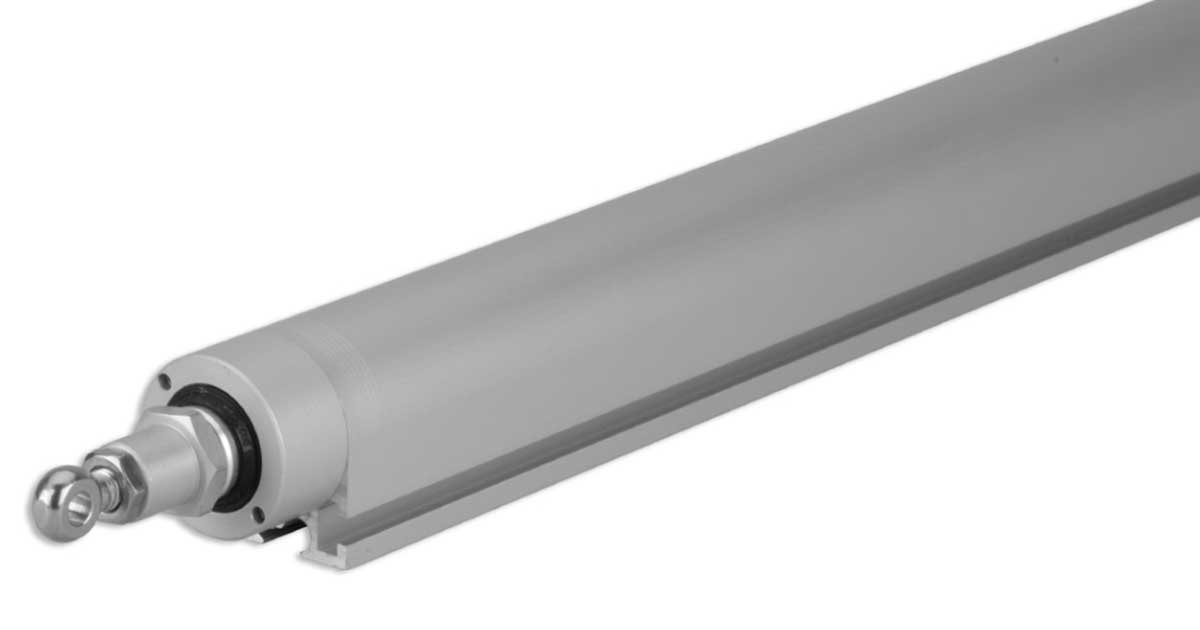Structure of spindle drives
Design and mode of operation
In screw drives, a thrust tube, usually made of aluminum, is used as the thrust or traction element. A thread is inserted in the tube, in which a threaded spindle engages. By turning the threaded spindle, the push rod is displaced and thus moves the window. With regard to drive, a fundamental distinction must be made between directly driven and indirectly driven spindles.
- Directly driven spindles do not have a gearbox. For this reason, these drives are usually relatively fast (usually only with 230V drives)
- Indirectly driven spindles are coupled to the actual motor via a gearbox. These are usually slower but smaller in size.




The cut-off in the end positions is done in a similar way as with the chain drives:
- The drive has an electronic load cut-off: In this case, the drive simply stops. From the point of view of the drive, this is a "normal" mode of operation - the drive suffers no damage as a result
- The drive switches off in the end positions only via reed contact or microswitch: In this case, the motor will burn out after a short time if blocked, because an extremely high current flows and it overheats. Burnout is often avoided as far as possible by using winding protection contacts. These react to temperature and interrupt the circuit in the event of overheating. However, this is not a normal operating condition - sooner or later this drive will suffer damage.
Mounting
Spindle drives are relatively rarely used to open facade windows. By far the most common application is roof skylights (skylight domes, arcade rooflights, ...).
Since in this type of drive the push spindle exits axially, the drive is often very long, depending on the stroke length. If this then extends the spindle, it swivels in the lower area sometimes noticeably.
You can influence the pivoting positively as far as possible by attaching the drive - if possible - far "back", i.e. by shifting the pivot point quite far to the "rear". The height of the sash or the size of the skylight dome also has a decisive influence. The larger the sash or the skylight dome, the less the drive pivots. The following pictures illustrate this relationship:
Console (pivot point) top:


Console (pivot point) bottom:


Pivot point relocation brackets are available for some of our drives. These bring the pivot point down, but are bolted "up". This may be necessary, for example, if there are insufficient mounting options or if the substructure is too weak.


Pros & Cons
Spindle drives can apply high push and pull forces, so they are well suited for lifting heavy loads, such as real glass skylights, among other things. They are relatively insensitive to water (min. splash-proof), but of course must not be exposed to rain (unless they are explicitly designed for this purpose). A rain guard is therefore also recommended here if the drives are installed in skylights.
Due to their design, the drives stand away from the element to be opened (window / skylight). Depending on the stroke length, this can be so much that you can bump your head. They are therefore only suitable to a limited extent for living spaces (for example, conservatories).





